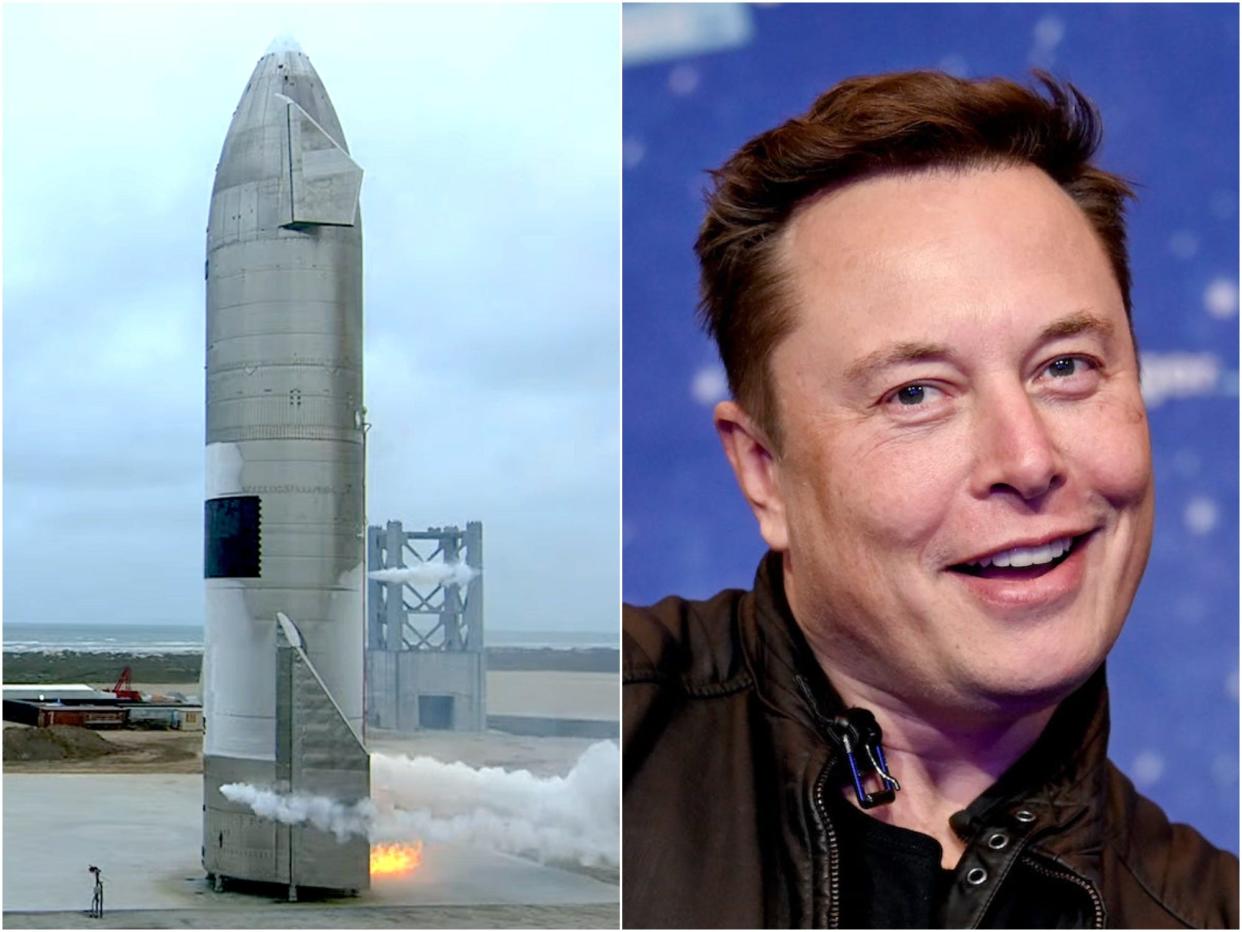SpaceX's Starship rocket is set to splash-land into the ocean near Hawaii in its first flight around the Earth, FCC filings show

The first orbital test of SpaceX's Starship is set to launch from Texas and splash down off the coast of Hawaii.
The trip around the Earth is scheduled to take around 90 minutes, FCC filings showed.
The Starship rocket will launch on the Super Heavy booster, which will carry it into orbit, SpaceX's filings said.
SpaceX is planning for its first Starship rocket orbital test flight to launch from Texas and splash down off the coast of Hawaii, according to the company's filing to the Federal Communications Commission (FCC) on Thursday.
Over the past year, SpaceX has launched five prototypes of its Starship rocket into the skies. The first four burst into flames on landing, but the fifth test flight, with Starship serial No. 15, or SN15, proved successful. This allowed SpaceX to move to the next step of Elon Musk's goal to reach Mars.
The company's FCC filings said the test flight, comprised of the Starship rocket and a Super Heavy booster, would blast off from SpaceX's launch facilities in Boca Chica, Texas. It did not give a projected launch date. The plan is for the booster to separate from the rocket nearly three minutes into the flight, and return to land roughly 20 miles from shore of the Gulf of Mexico.
Meanwhile, the Starship rocket is set to continue into orbit, the filing said. SpaceX plans for it to travel almost all the way around the Earth before plummeting back into the atmosphere, and splashing down in the Pacific Ocean around 62 miles off the northwest coast of Kauai, one of the Hawaiian Islands.
The orbital test flight should last around 90 minutes, the filing said.
The five prototypes the aerospace company has already launched were the upper stage of a two-part rocket system for Starship. Now that the 16-story upper stage is able to reach high altitude smoothly, SpaceX will add on a 23-story booster called Super Heavy.
The Super Heavy booster will try to heave the nearly 400 feet tall spaceship towards orbit.
SpaceX's ultimate goal is for the Starship to carry humans into low-Earth orbit, to the moon, and to Mars, then return to Earth to repeat the journey again. In April, NASA awarded SpaceX an exclusive contract to land the first humans on the moon since 1972.
Read the original article on Business Insider

